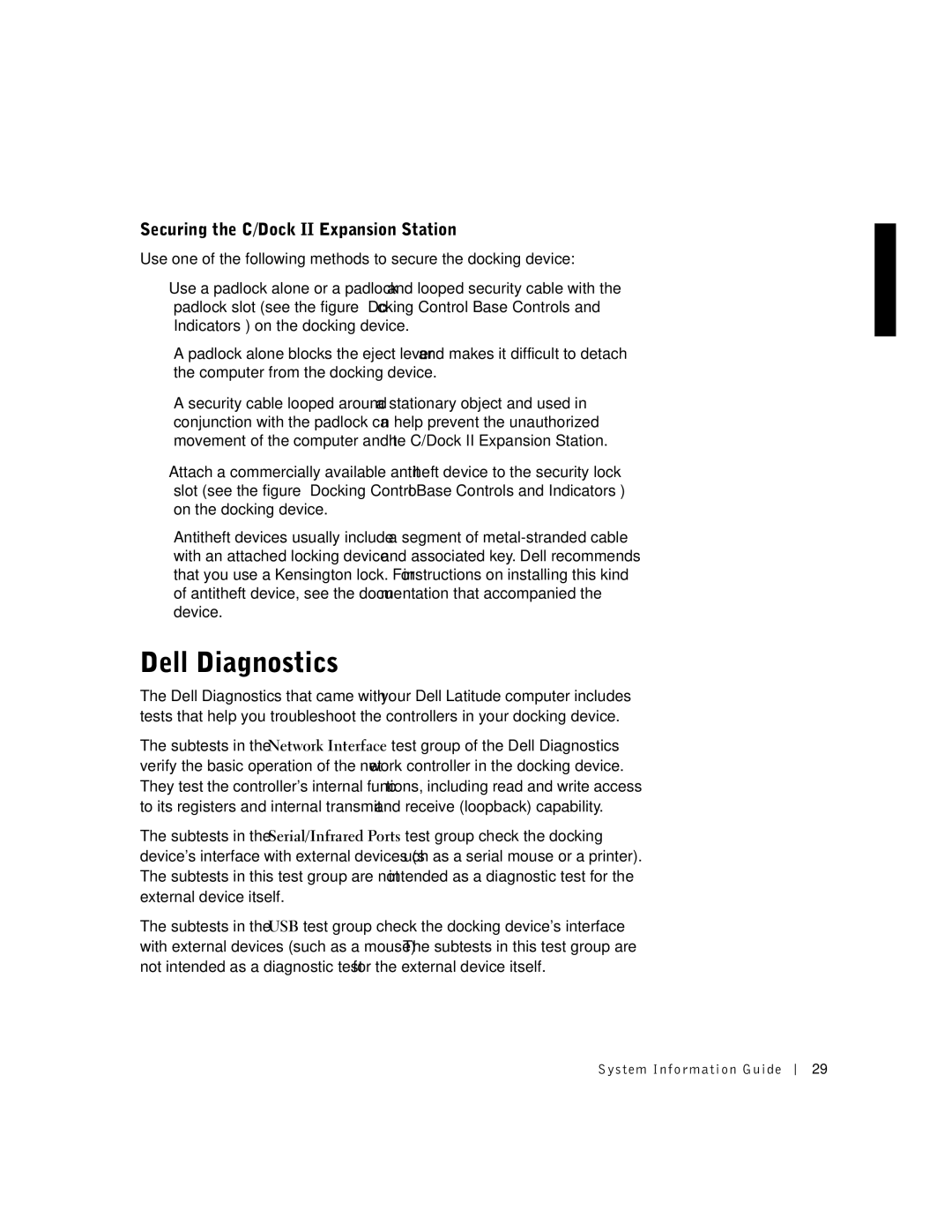
Securing the C/Dock II Expansion Station
Use one of the following methods to secure the docking device:
•Use a padlock alone or a padlock and looped security cable with the padlock slot (see the figure “Docking Control Base Controls and Indicators”) on the docking device.
A padlock alone blocks the eject lever and makes it difficult to detach the computer from the docking device.
A security cable looped around a stationary object and used in conjunction with the padlock can help prevent the unauthorized movement of the computer and the C/Dock II Expansion Station.
•Attach a commercially available antitheft device to the security lock slot (see the figure “Docking Control Base Controls and Indicators”) on the docking device.
Antitheft devices usually include a segment of
Dell Diagnostics
The Dell Diagnostics that came with your Dell Latitude computer includes tests that help you troubleshoot the controllers in your docking device.
The subtests in the Network Interface test group of the Dell Diagnostics verify the basic operation of the network controller in the docking device. They test the controller's internal functions, including read and write access to its registers and internal transmit and receive (loopback) capability.
The subtests in the Serial/Infrared Ports test group check the docking device's interface with external devices (such as a serial mouse or a printer). The subtests in this test group are not intended as a diagnostic test for the external device itself.
The subtests in the USB test group check the docking device's interface with external devices (such as a mouse). The subtests in this test group are not intended as a diagnostic test for the external device itself.
System Information Guide
29
